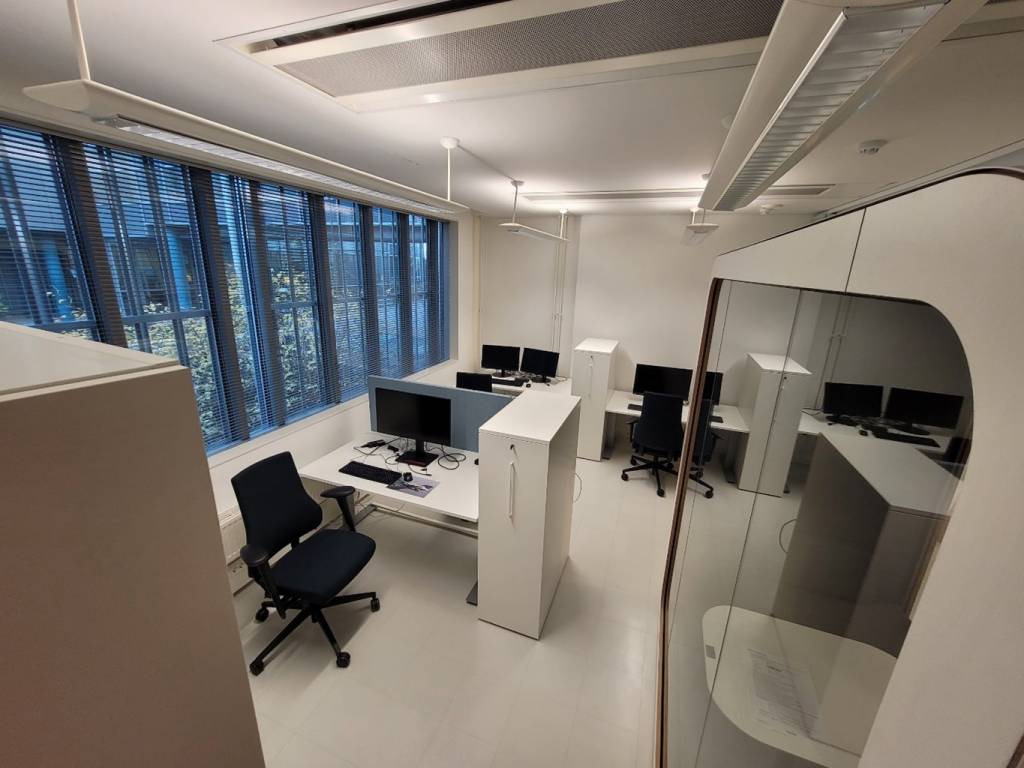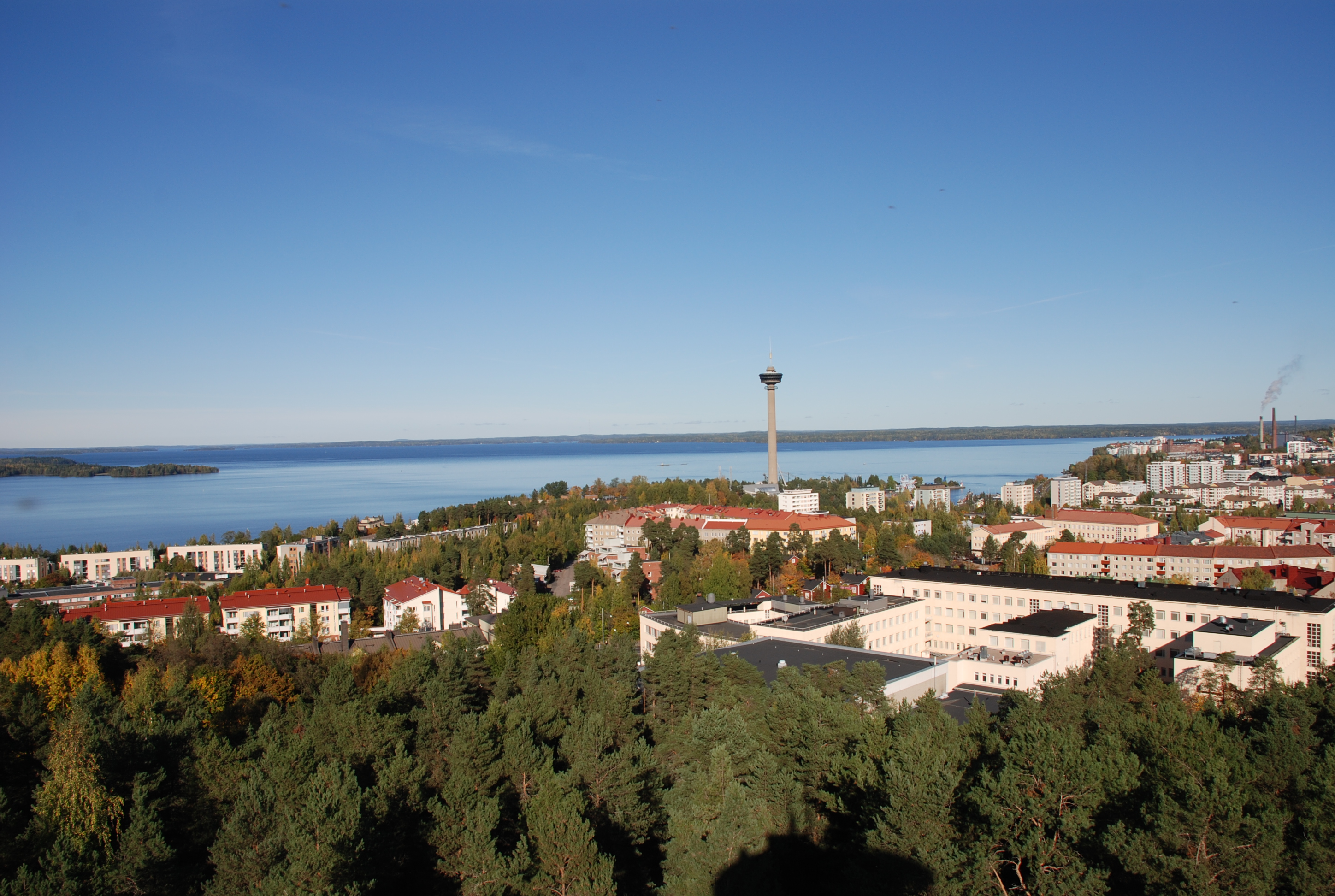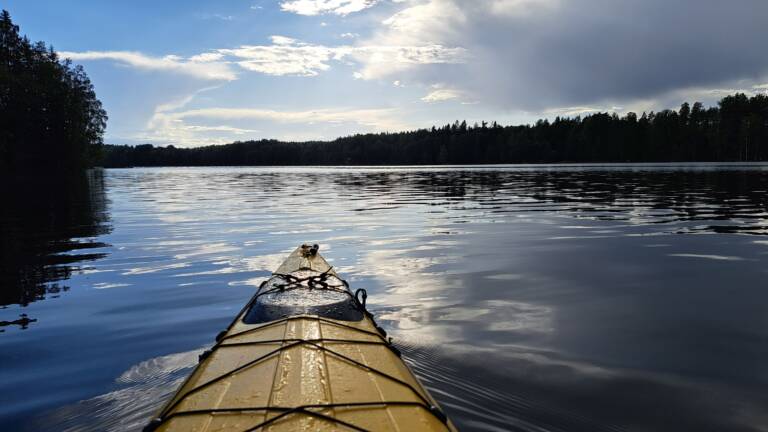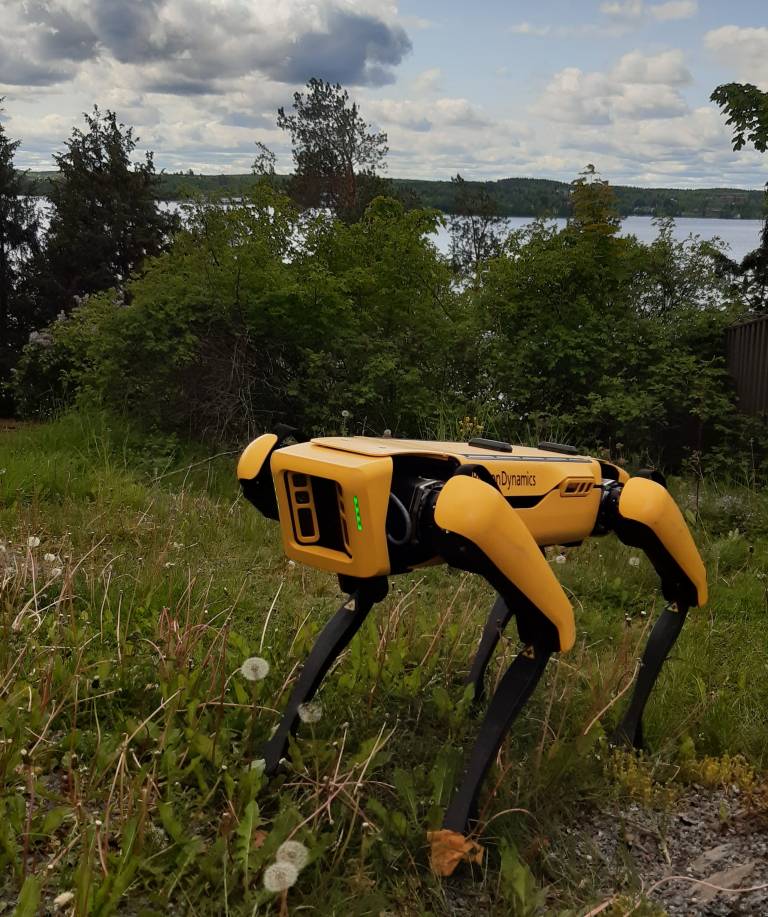Background info and rules for the week
Presently, I work as a staff scientist. In my past roles I have worked outside TAU campus in three one-year stints. First at the University of Metz, France, where I shared the office with 2-3 other people. Then at KAIST in South Korea, where I had a huge office-lab just for myself. 2020 and 2021, I worked remotely from home during the pandemic. I also have worked with a laptop in various places during shorter conference trips and research visits. I believe that most of our research and teaching staff are aware of and experienced in the laptop-only approach to work.
For the experiment I had the following spaces and rules:
- The 5-person coworking space in the 0-floor of Pinni B (B0042-0043) that the ITC faculty has set up for temporary and cross-campus work.
- The Tampere ITC office in Tietotalo, which is a two-room setup shared with the Tampere ITC staff (3 people).
- In Pinni I used my own office (B2001) as the “quiet/private space” that our new premises presumably will have for one-to-one meetings and online meetings. Simultaneously B2001 was a simulator for a goods traffic room/storage.
- An office room in my home.
Monday
Since I had no urgent business on campus, I decided to work remotely. Work went well and it was nice to be reminded how much time is saved by not traveling to the campus and only needing to walk to the fridge for lunch.
Tuesday
Again, a day with no absolutely necessary presence on campus. However, I hoped to do some work in the labs in between meetings, so I went on campus.
The coworking space is perhaps the closest office to my parking spot. Just three doors and about 50m of corridor. Also, it appears that the furniture had changed after my last visit. One workstation had been replaced by a 4-person meeting cubicle from Framery.

When I arrived, the co-working space was empty. It took me a couple of minutes to set up the two screens on the desk and realize that these really are Full-HD displays, not higher resolution models, that I am used to at home and in my regular office.
I checked my email and went to a meeting in the 2nd floor. When leaving the workstation, I did not know what to do with my bag. I put the bag in a drawer/cabinet next to my seat and closed the door. I locked the cabinet. I then reconsidered and left the key in the lock. Who would steal my stuff? Would somebody need the cabinet while I was away? Procedures for stuff and cabinets clearly need to be agreed-upon in these spaces.
Soon after I got back, another worker entered the working space. Around 10:15 I noticed that the space is noisier than my regular office. The other worker had some sort of respiratory infection and noise from classroom next door as well as from the corridor came in stronger than I am used to.
Second meeting of the day began at 11:00. As it was in Teams, I participated it in my simulation isolation space B2001. Then lunch. Then another Teams meeting. After the meeting there was an emergency in the usability lab. Fixing software settings in the lab was followed by a few emails and phone calls from the shared working space. I was able to do the phone calls without moving because I was alone in the room now.
When leaving for home I forgot to check my schedule for the next day. Routines like this are easily broken when the environment changes.
Wednesday
The day started with a face-to-face meeting in my office. The meeting overran its scheduled time with about 30 minutes. This is typical in meetings where new things are discovered during the meeting or where complicated planning takes place. Having a tight schedule and high usage rate for the “isolation spaces” and meeting rooms will disrupt this practice.
During the meeting a researcher knocked on the door to pick up the parcels that had arrived in my office. If we had been in a meeting room and the parcels in a different room this would not have worked.
When leaving the office after the meeting, I noticed that in the shared spaces there is no place to store work clothing. I have a fleece jacket for cold days, sandals to avoid sweaty feet in shoes every day, and a lab coat. I guess a dressing room with a locker for every employee is needed if the office does not work as the locker. Alternatively, we all must upgrade our backpacks to hold these extra items.
I wonder how the cleanliness of the keyboards and mice will be maintained in shared workstations? The devices in my office tend to get grimy in about a year. That does not bother me much because it is my own grime. When lots of people use the same devices, it feels like (and probably is) a more likely way of transmitting microbes between users.
Back in the shared working space I scheduled meetings, processed email and wrote these notes of the last two day’s activities. Except for me the space was again empty.
Around 12:30 I received a call on my private phone. In a fully occupied open workspace I would have needed to move to the phone booth. Since I was alone, I did not.
At 14:30 I moved to a lab to swap around the network boxes that transmit video and USB data around in the lab. I packed the broken devices and left them at the Pinni B info desk to be picked up by a courier service later.
When popping out of the coworking space I have noticed that it is too much of a hassle to pick up the laptop every time. I just leave it on the desk. I think that changing the workstation during the day is too much work. Once you settle somewhere for the day, It is excessive optimization to require people to clean the workstation for others to use while they are in a meeting, on lunch or running some errand nearby.

Thursday
The day began with an early meeting at 7:15. This I attended remotely from home. I then drove to Hervanta to attend remotely in a meeting followed by two face-to-face meetings. The shared office in Tietotalo was all for me since others were busy outside the office. For good utilization of empty hours between meetings outside one’s own campus, it is excellent to have shared offices or coworking spaces on all campuses.
For the afternoon I drove to the center campus stopping for lunch on the way. The coworking space was again empty except for me. One person walked through the space during my stay.
I sat at a different workstation than earlier. There were two displays and they were 2k. Some of the workstations only have one of these 2k displays. When a laptop is moved from one workstation to the next, it seems to require re-organizing the display settings. This can get annoying if you need to do it several times every day. Some sort of automation would be needed if we are to change workstations often. The mouse at this new workstation did not work well. I suppose a mouse mat might help.
I got the day’s email and a few pending tasks done during the afternoon.
Friday
On Friday I had only one pre-scheduled meeting at the end of the day. I was again alone in the coworking space. Just to test the option, I took a private phone call in the Framery box. For this phone call it was OK. Often, however people phone to ask me very detailed things. This often requires that I have my computer with me so that I can open documents and websites to find th answers.
When I returned to my workstation I noticed that the Framery box is pretty noisy on the outside when the ventilation is on. When nobody is in the box, it is quiet, but as soon as you enter it will start moving air. It keeps doing that for a few minutes after people leave.
When people pass an open coworking space it is natural to stop and exchange a few words with colleagues. It remains to be seen how this works in practice when multiple people occupy these spaces. These chance-encounter discussions can be annoying for others who are trying to get work done. As I was alone in the coworking space I was free to set the rules as I wished. This will clearly not be possible everywhere all the time.
Around noon I was filling in a form that asked all kinds of old career information. This required access to archives from past years. My laptop cannot hold such large quantities of data. Therefore, they are on another computer in my office. Separation from personal offices also means separation from the ability to have large data archives (or that they all need to be moved online – or carried around on USB drives).
I heard from my colleagues that they had been knocking on my office door trying to find me and failed. Naturally, if I did not have an office this would not happen. Still, this points out how behaviors must change if dedicated offices no longer exist. Physically walking over to somebody will no longer be viable without first finding out where that person is likely to be. Assumptions can no longer be made based on office assignments.
Lessons learned:
Things needed in addition to the workstations in coworking spaces if everybody works like me:
- Lockers for personal items (including data archives).
- Lots and lots of small phone booths – mini meeting room spaces (around 0.5 for each occupied workstation – or more).
- Good access control so that it is safe to leave laptops, phones, and other stuff on desks unattended
- Big displays – preferably 2 for each workstation
- Solution for removing keyboard and mouse grime
- Display settings automation
- A way to avoid spending a lot of time with workspace reservation system.
Framery boxes are nosy when occupied.
The coworking space in 0-floor of Pinni B does not utilize the area any more efficiently than two-persons per room packing in normal offices would. It takes the space of three offices and there are 5 workstations plus the Framery cubicle. My guess is that the Framery cubicle will not be used for full-day work sessions. It is not very comfortable.

This week I had unusually few meetings. Often, I have full days of back-to-back meetings. Even so, I spent only a couple of hours at my workstation on most days. I spent about the same amount of time running errands around the campus. Most of my time I spent in meetings. These were mostly Teams meetings, but there were also face-to-face meetings on two campuses. This means that the space I need for the longest time on an average day is a meeting room. Mostly this would be a one-person private online meeting room, but also face-to-face meeting spaces are needed.
The use of spaces roughly ordered by time spent in them (from most to least):
- Private room for online meeting
- Office workstation
- Face-to-face meeting room
- Labs
- Storage
- Cafeteria/restaurant
- Corridors/other people’s doorways
- Toilet
Presently 1-3 and 5 are combined in my office. I am not sure if spreading different activities to different spaces is a good idea. It seems that having a separate space for each activity it generates much overhead that does not exist in the traditional office setup.
Different people have different jobs and different needs. Knowing my experience does not help everybody in figuring out their future working space scenarios. For me this experiment helped. Not so much in terms of useful data, but in terms of thinking in more detail about the practicalities of different workspaces during the working day and working week. I now know more of future scenarios that are workable for me and of those that are just too much hassle to be worth serious consideration.
Written by Poika Isokoski 28.12.2022




